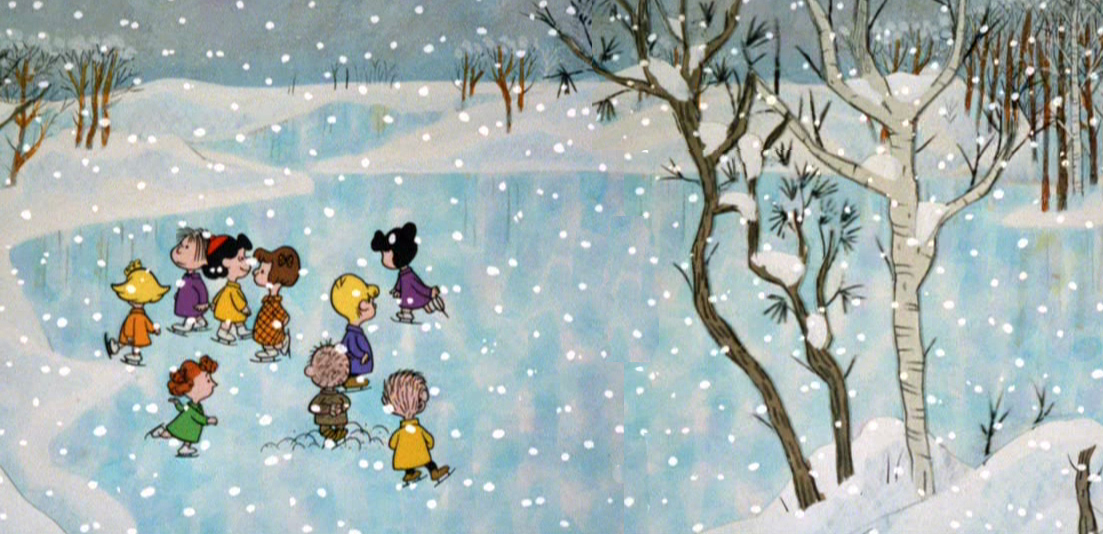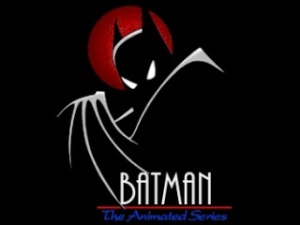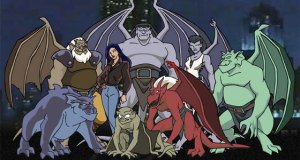I just love Christmas, and not the hype or commercialism, but the nostalgia, the lights and decorations that bring forth a feeling of hope and happiness… And of course, I love the Christmas specials. Nowadays, the producers of every cartoon series or animated feature are persuaded to create a Christmas special; some are funny and sweet, others not really worth the effort. I wonder how many will become Christmas classics that stand the test of time. Venture back with me, if you will, to the days of old… television animated specials, that is.
The very first animated Christmas special aired on NBC-TV December 18, 1962 and was based on Dicken’s classic, starring the bumbling and nearly-blind Mr. Magoo as Scrooge in Mr. Magoo’s Christmas Carol.
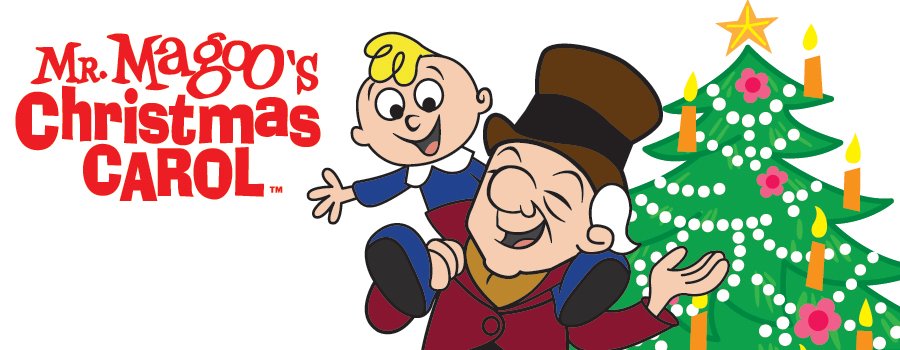
This hour-long animated special produced by Abe Levitow at United Productions of America (UPA) has the honor of being the very first of its kind – the animated Christmas special. The Dickens’ story is retold as if it were a Broadway musical, with a score provided by Funny Girl’s Jule Styne and Bob Merrill with Jim Backus (mostly remembered as Mr. Howell from Gilligan’s Island) voicing Quincy Magoo.
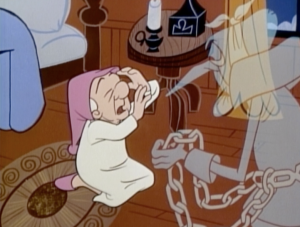
The moral, like most Christmas Carol adaptations, blatantly expresses the repercussions of greed and selfishness and shows the importance of good will towards men. Although various adaptations of A Christmas Carol are broadcast throughout December, rarely does the landmark (and gem of an animation) air anymore.
NBC also broadcast the second TV animated Christmas special: on December 6, 1964 Rankin and Bass’s retelling of the Johnny Marks Christmas song, Rudolph, the Red-Nosed Reindeer premiered.
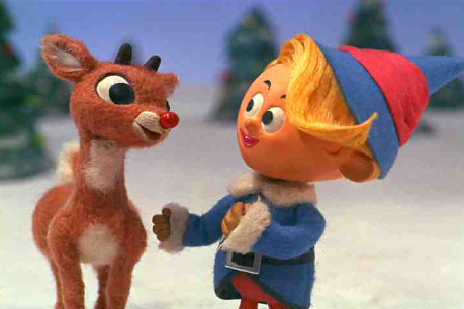
Romeo Muller expanded the short holiday song into a one-hour script, to which Rankin and Bass worked their “Animagic”, their special brand of stop-motion animation. In this telling, Rudolf the Red-Nosed Reindeer travels with Hermey, an elf who would rather be a dentist. The two venture to the Island of Misfit Toys, meet prospector Yukon Cornelius and the Abominable Snowman and, of course, save Christmas. Then-famous actor Burl Ives voiced the narration through Sam the Snowman, and his two songs (“Silver and Gold” and “Holly Jolly Christmas”) play each year on the radio.
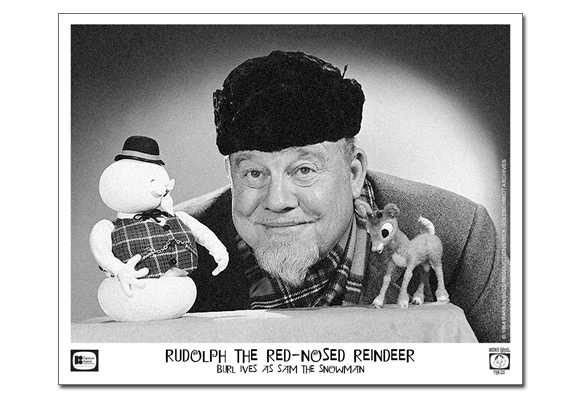
The animation may seem a bit stilted to those who prefer modern techniques, but the heart and the work that went into this and other Rankin/Bass stop-motion classics make them worth the viewing. Arthur Rankin and Jules Bass created some of the most memorable animation specials, usually with stop-motion characters but occasionally with traditional cel animation.

For the next 20 years, Muller, Rankin and Bass continued to collaborate on other Christmas specials: The Little Drummer Boy (1968), Frosty the Snowman (1969), Santa Claus is Comin’ to Town (1970), Nestor, the Long-Eared Christmas Donkey (1977) and Pinocchio’s Christmas (1980). Other than Frosty the Snowman, the other specials are rarely shown on television today, which is a shame: kids today miss out on the Snow Miser & Heat Miser’s song from 1974’s The Year Without a Santa Claus! (But you can watch it here: Snow Miser/Heat Miser song)

And then along came Charlie Brown…
In the 1950s, Bill Melendez created commercials for the J. Walter Thompson advertising agency, during which time the Ford Motor Company was looking for a spokesperson for their forth-coming car, the Ford Falcon. Over dinner one night, the ad agency president, Norman Straus, and Melendez were discussing options, when Straus’s granddaughter suggested using Peanuts. (Watch the original 1960 ad here: Peanuts’ Ford Falcon commercial) Although at the time Straus has no idea who or what ‘Peanuts’ was, this was the beginning of two things: the animation of Peanuts characters and Peanuts on television.

Melendez wrote:
Sparky’s [Charles Schulz’s] characters in those early days — the late ’50s — were definitely two-dimensional. I therefore could animate the characters in a very stylized way. I would try to give the impression of “full” animation in a limited way; create the illusion of complete mobility with a minimum of drawings. [. . .] The first commercial we did was a minute spot, about 58 seconds long and in 35mm footage about eighty-seven feet long or about two thousand drawings.
During this time Lee Mendelson produced a documentary, A Man Named Mays, about baseball great Willie Mays. Mendelson decided to next create a documentary about the worst ball player of all time, Charlie Brown and his creator, Charles M. Schulz. The two met and began production on a thirty-minute production, complete with two-minutes of animation for A Boy Named Charlie Brown.
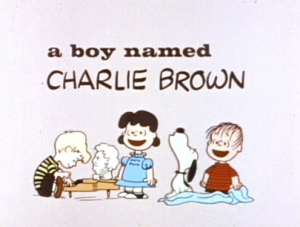
Schulz suggested Melendez for the animated segments based on a few of Schulz’s comic strips. Mendelson suggested Vince Guaraldi compose Jazz music for the background, and Guaraldi agreed, being an avid Peanuts fan; it was for this documentary that Guaraldi penned his most famous composition, “Linus and Lucy” which would become the theme music for Charlie Brown from then on. The completed documentary was shown to the San Francisco Advertising Club to rave reviews; Mendelson was sure he could find a network buyer: “But in true Charlie Brown fashion, no one was interested.
Seven years later, only slightly modified, the documentary won an Emmy. Mendelson continued pitching the show for more than one and a half years to no avail, until April 1965, when Time Magazine published a cover story about the Peanuts gang and Schulz.

Then the phone rang, John Allen from the McCann Erickson Agency expressed interest, but not in the documentary. Instead he asked, “Have you and Mr. Schulz ever considered doing a Christmas special?” Mendelson hastily answered yes! The catch: the sponsor, Coca-Cola wanted an outline in 5 days. Then he called Schulz: “‘I think I may have just sold a Charlie Brown Christmas show,’ I said. ‘And what show might that be?’ Sparky asked. ‘The one you need to make an outline for tomorrow,’ I replied. Without missing a beat, he calmly said, ‘Okay. Come on up.'” Schulz only had a few demands: “If it’s to be a Christmas special, I want to certainly deal with the true meaning of Christmas.” Schulz wanted to include scenes with snow and skating, a reminiscence of his childhood in Minnesota, and he suggested they include jazz music mixed with traditional holiday songs. Schulz also insisted that children be hired to do the voices instead of the usual adults-as-children, and he refused to allow a laugh track. The end result would hardly vary from the outline Schulz and Mendelson created that day.
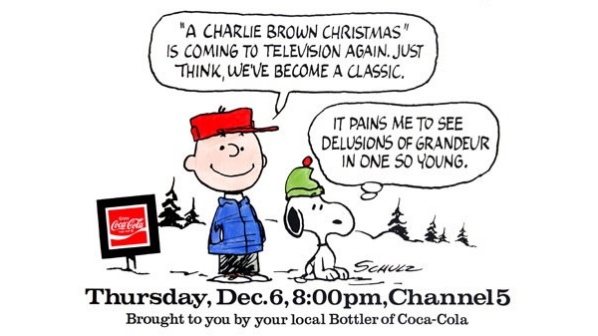
The approval came with the condition the program be ready to air that December, giving the group only a few months of production. Besides the very-religious outline and Schulz’s other demands, there was one thing left that could break the deal:
Because there was precious little time left, it was agreed a half-hour special would be completed in the three months remaining before the Christmas air date. The carbonated beverage giant had thrown in with the round headed kid; television had rarely seen a more unlikely trio. [. . .] At the time the standard network specials (or “spectaculars”, as they were immodestly known) ran for 60, 90, or 120 minutes. CBS was understandably hesitant about such a radical departure from tradition. After all, the network had never aired such a short animated special, and the public might, God forbid, be taken by surprise. [. . .] Siding with the producers, Coke approved the half-hour format.
The show’s budget was set at $75,000 – the same amount used for one-half hour of animation from Hanna-Barbera – and because of Melendez’s insistence of higher quality, the show ran over budget, to $96,000.

The completed program was screened one week before air date by Coca-Cola and McCann-Erickson to favorable reviews, however CBS was not impressed by the final product. The disappointed network executives described the program as “a little flat” and “slow.” With the air date so soon, the program would have to air, however, they quickly canceled their option for another program: “But maybe Peanuts are better suited to the comic page.”
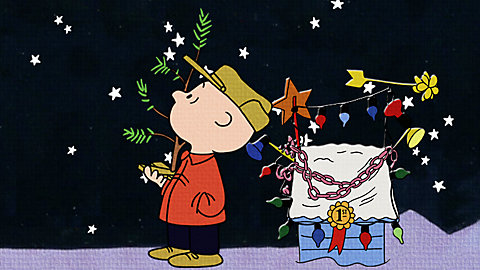
Richard Burgheim, a Time Magazine writer, stood waiting for his own screening. Although CBS wanted to cancel his screening, Mendelson insisted it would be worse to NOT show him. Burgheim watched the program then left without saying a word. A few days later, Burgheim’s review appeared in the TV section of Time Magazine:
December is the gruelingest month, the time when there seem to be more seasonal “specials” than regular shows on TV. But this Thursday . . . CBS will carry a special that is really special. For one thing, the program is unpretentious; for another, it is unprolonged (30 minutes). Finally, it represents the overdue TV debut of the comic strip Peanuts. A Charlie Brown Christmas is one children’s special this season that bears repeating.
TV Guide ran a two-page spread with a “Close-Up” of the program. A Charlie Brown Christmas debuted on December 9, 1965 and ranked second in the Nielson ratings, and CBS called and ordered four more specials.

The reviews were glowing, and the critics raved:
If you missed Charlie’s debut on TV, I’m sorry for you. Write CBS and say all you want for Christmas is a repeat. (Harriet Van Horne, NY World Telegram)
The Peanuts characters last night staked out a claim to a major television future. . . (Rick DuBrow, U.P.I.)
Natural-born loser, Charlie Brown finally turned up a real winner last night. . . excellent animation. . . fine job of matching voices to characters. (Lawrence Laurent, Washington Post)
Charm and good taste marked the animated Charlie Brown show. . . it appealed to grownups as well as the moppet set. (Ben Gross, New York Daily News)
A Charlie Brown Christmas, the little show that almost didn’t air, won an Emmy Award in 1966 for Best Network Animated Special, and a Peabody Award for the outstanding children’s and youth’s program for the year 1965. A Charlie Brown Christmas has been rebroadcast every year on network television since, and is considered by many to be the best of all the Christmas specials, animated or otherwise.
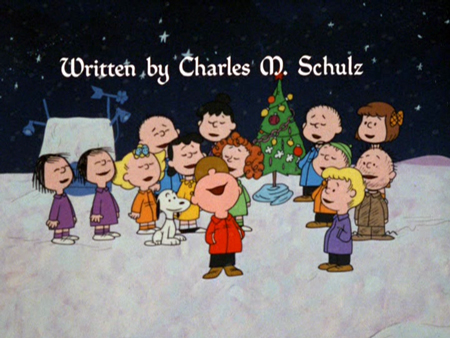
PHEW! That’s a lot of info about Charlie Brown, but I just love the program and the story behind it. I hope you do too.
Maybe I’ll tackle the Grinch next week. Do you think he’ll mind that he missed Christmas?
Daffy Doc
